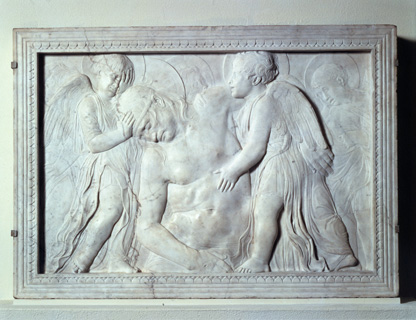The walls of the Sainsbury Wing of the National Gallery are painted in the cool grey colour of pietra serena, the stone so ubiquitously used in the churches and palaces of fifteenth and sixteenth-century Tuscany that it instantly conjures up the world of the Florentine Renaissance. But evocative as it is, the gallery can be no more than a stage set for the contemplation of the Renaissance masterpieces which it contains – pictures long removed from the sacred and domestic spaces which they were originally designed to adorn.
Museums inevitably tell a partial story of the past; and perhaps no museum can hope to reconstruct the richly interwoven texture of Renaissance art.The difficulty is exacerbated by the specialised nature of most museums. A rich Renaissance collector and connoisseur such as Lorenzo de Medici would certainly have seen many of the paintings in the National Gallery’s collection, but he would have seen them in their original settings. In addition, he would have admired portfolios of drawings, such as Botticelli’s muscular illustrations to Dante’s Inferno. He would have enjoyed handling the collection of antique gems and cameos which he kept in his cabinet, together with their modern equivalents, the elaborately allegorical medals designed and struck by Pisanello, and other artists bent on reviving the artistic forms of classical antiquity. He would have admired classical sculptures themselves, both sculptures in the round and the bas-reliefs on the sides of Roman sarcophagi, many of which, recently exhumed, formed part of his family’s art collection. He would have admired the sculptures created by his own contemporaries.
Yet because the National Gallery was established, purely and simply, as a museum of western European painting, it only bears witness to a fraction – albeit a very important and beautiful fraction – of the Renaissance artistic...

The advantages of displaying sculpture alongside paintings at the National Gallery
28-08-2005

